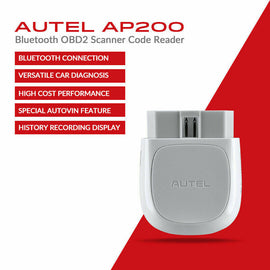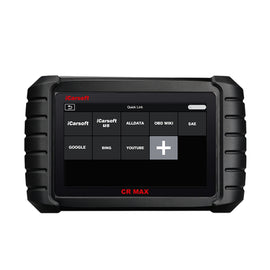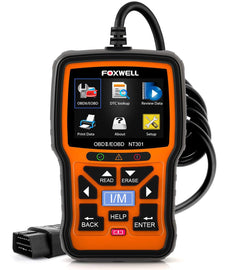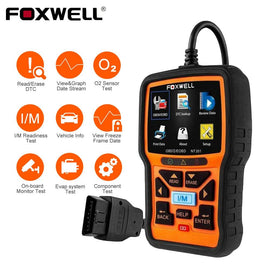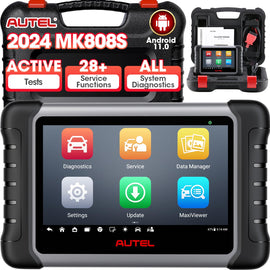What Is OBD II
OBD (On-Board Diagnostics) is a computerised system that provides access to data from the engine control unit (ECU) and offers a valuable source of information when troubleshooting problems inside a vehicle.
It ensures that the system is operating as designed or delivering what it is designed to do. If something is outside the prescribed operating conditions, an alert can be sent out, or other actions an be taken to bring the system back into balance.
OBD main goals are:
- Increase fuel economy by ensuring optimal engine running conditions
- Reduce emissions
- Reduce the time between a system failure and notification through constant monitoring and comparison of acceptable system data
- Aid diagnostics and repair of emissions equipment
OBD Background
During the ’70s and early 1980’s manufacturers started using electronic means to control engine functions and diagnose engine problems. This was primarily to meet EPA emission standards (USA). These early systems ALDL, OBD1 and OBD 1.5 used proprietary connectors, hardware interfaces, and protocols. This means that for a mechanic to access diagnostic information needs to buy a tool for every different vehicle make.
In the early 1990s, Society of Automotive Engineers (SAE) and International Standardisation Organisation (ISO) issued a set of standards which described the interchange of digital information between ECUs and a diagnostic scan tool. All OBDII compliant vehicles were required to use a standard diagnostic connector (SAE J1962), and communicate via one of the standard OBDII communication protocols.
OBD-II Introduction (OBD2)
In mid 90’s, EPA amended the Clean Air Act to include the requirement that all vehicles built and sold in USA after January 1, 1996 to be to be equipped with OBD-II / OBD2 system.
All petrol vehicles manufactured in Europe were required to be OBD-II compliant after January 1, 2001. Diesel vehicles were not required to be OBDII compliant until January 1, 2004.
All vehicles manufactured in Australia and New Zealand were required to be OBD-II compliant after January 1, 2006. Some vehicles manufactured before this date are OBD-II compliant, but this varies greatly between manufacturers and models.
Is My Car OBD II (OBD2) Compliant?
Here is what you need to do to find out if your vehicle is OBD2 compliant:
Look for the 16 pins OBD2 connector under the steering wheel. However, some cars do have a D shape 16 pins plug but it does not have the ‘OBD-II’ sign. This means that the car does not have the OBD-II protocol.
You may also consult your vehicle’s owner’s manual or contact your local dealer. However, be aware of the fact that many dealers do not know the difference between OBD1 and OBD2.
Check our list of confirmed OBD II cars in Australia which should help you determine if your car is OBD II compliant.
Looking for the right product for your vehicle? Click here to CONTACT US.
| Foxwell iCarsoft Autel Launch Xtool Automotive Scanner Full System Diagnostic Tool|srs scanner tool|clearing trouble codes of Engine, Airbag/SRS, Transmission, ABS| Oil Service reset, EPB Electronic Park Brake Service Reset Fast Identifies VIN Number| Dealer level oil service light reset functions advanced EPB functionalities Lifetime free upate upgrade workshop mechanic dpf dpf reset regeneration TMPS Bluetooth WiFi X431 Elite Pro odometer correction milage correction key programmer programming ecu coding ecu coding Holden service engine light MIL|Steering angle|sensor|o2sensor|IMMO|Audi|alfa remeo|BMW|chrysler|dodge|fiat|ford|holden|honda|hyundai|isuzu|jaguar|jeep|kia|land rover|lexus|mazda|Mercedes-benz|mitsubishi|nissan|peugeot|proton|subaru|suzuki|toyota|volvo|volkswagen|vw|TPMS |IMMO|oil service reset|oil reset|scan|scanner|diagnostic|tuning|code reader|fault reader|fault coder reader|all systems|full systems|mobile mechanic|android|iphone|bidirectional|bi-directional|srs|light|led|BMS|batter registration|europeon|error|Diesel Particulate Filter|regeneration|SAS|steering angle|calibration|intervals|sensor|alarm|live data|graph|auto vin|fix|read clear reset codes| |


